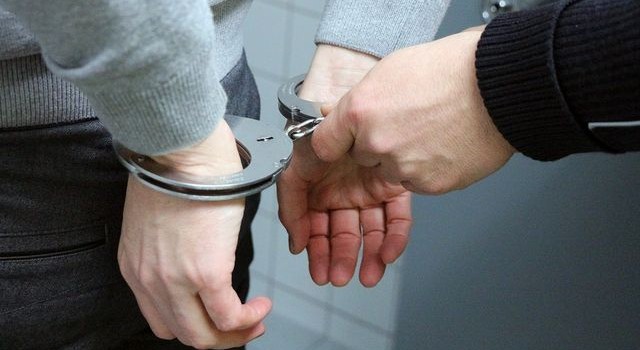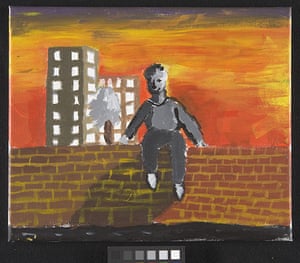Trauma, Death and Profits – Youth Prisons in the UK


This August, Corporate Watch were asked to support a Global Week of Action to Shut Youth Prisons by providing research about Youth Prisons in the UK. This article highlights the companies profiting from the imprisonment of children and young people, as well as the trauma, abuse, and deaths that these institutions perpetuate.
In the UK there are three types of youth imprisonment. Secure Children’s Homes are run by local councils for children aged 10 to 14. Young Offender Institutions (YOIs) are for young people aged 15 to 21. Those under 18 are held in separate institutions. Many YOIs are also part of adult prisons. There are 26 prisons in total across England, Wales, and Scotland that hold 18-21 year olds. Young adults (aged 18 – 24) make up 17% of the prison population with more than 14,932 imprisoned.
Secure Training Centres (STCs) are for children aged up to 17. There are three in England. These include Medway in Rochester, Kent; Oakhill in Milton Keynes, Buckinghamshire; and Rainsbrook in Rugby, Warwickshire. As of June 2017, there are 924 children in prison in England and Wales. Until July 2016, all of the Secure Training Centres were run by private companies.
Secure Training Centres
Medway
 Medway STC was originally managed by G4S Care and Justice Services Limited. G4S announced its intention to sell its management contract after intense controversy following an investigation by BBC Panorama that aired in January 2016. The documentary showed staff members punching a child in the ribs and slapping another child in the face. Also on film were staff allegedly boasting of their worst mistreatments of young people, which reportedly included using a fork to stab one child in the leg and another who made a child cry uncontrollably. Police arrested more than 11 members of staff following the documentary and criminal proceedings are still ongoing.
Medway STC was originally managed by G4S Care and Justice Services Limited. G4S announced its intention to sell its management contract after intense controversy following an investigation by BBC Panorama that aired in January 2016. The documentary showed staff members punching a child in the ribs and slapping another child in the face. Also on film were staff allegedly boasting of their worst mistreatments of young people, which reportedly included using a fork to stab one child in the leg and another who made a child cry uncontrollably. Police arrested more than 11 members of staff following the documentary and criminal proceedings are still ongoing.
The STC is now run by the Government’s National Offender Management Service (NOMS). Conditions have barely improved. A recent inspection report by Her Majesty’s Inspectorate of Prisons (HMIP) released in June 2017 showed the safety of young people, effectiveness of leaders and managers, and the promotion of positive behaviour as inadequate. Restraints, where children say they cannot breathe, are still common, and physical restraints and fights have increased. Two women who had been imprisoned in Medway still recall having nightmares from their experiences there. Lela Xhemajli described one particular restraint in the winter of her sentence:
“The member of staff dragged me out of the sports hall – there were about 12 members of staff watching – and he was slipping all over the place. He grabbed me by my hair and was slamming my face off the ice, swearing at me. He had one arm under my neck and was pulling me off my feet, and every time I moved he’d slip and then get even more angry with me and slam my face off the ice again.”
The prison was originally built by Carillion in 1998 and financed by the Private Finance Initiative as part of a bigger wave of private prison construction in the UK. It was initially managed by Rebound ECD (Education, Care, and Discipline), a trading name for ECD Cookham Wood Limited, a private company owned by GSL and Carillion. GSL were taken over by G4S in 2008 and continued to manage the centre.
Oakhill

Another large market for Working Links is ‘welfare to work’ programmes, previously exposed by Corporate Watch for increasing the number of benefit sanctions. They have also given consultancy advice to Governments in Saudi Arabia and Kuwait. Working Links were bought by the Aurelius Group in June 2016. Aurelius is an investment group that makes money from acquisitions. They also recently bought Allied Healthcare, one of the biggest home care companies in the UK.
The last inspection report of Oakhill showed high levels of violence and use of force. The Ofsted Report highlights how the number of incidents where staff had used force has doubled since the last inspection. Inspectors were also concerned about one child who lived in the healthcare wing and had less than 15 minutes in the open air each day.
Rainsbrook
The third Secure Training Centre is Rainsbrook, which has also been plagued by controversy. In the last inspection report, published in August 2017, inspectors said 48% of the children they surveyed had reported being restrained by staff at Rainsbrook. In 2004, 15-year-old Gareth Myatt died of asphyxiation while being restrained in the prison. Over 500 violent incidents were recorded in a six-month period in a prison that locks up 58 children.
Gareth Myatt was a mix-raced child who had endured racial abuse since primary school. He was sent to Rainsbrook for stealing a bottle of beer and assaulting a member of staff in his children’s home. After a guard picked up a piece of paper with Gareth’s mum’s phone number, he became distressed and raised his fist at the officer. The 6 foot, 14 stone man then enveloped Gareth on a bed. Joined by two other officers they applied a restraint technique called the ‘seated double embrace’. The pathologist at Gareth’s inquest said he was ‘essentially dead’ when the three officers had finished restraining him.
Following the Medway expose, G4S relinquished control of the Rainsbrook and a contract was awarded to MTCnovo Limited, who began operating the centre in May 2016. They have a five-year contract. Their main market in the UK is running the ‘Community Rehabilitation Companies’ for the London and Thames Valley regions.
MTCnovo are part of MTC (Management and Training Corporation), a US company who operate more than 22 ‘correctional facilities,’ i.e., prisons and detention centres, across the States.13 In 2015, the US Department of Corrections had to cancel their contract with MTC after widespread rioting in one of their facilities – the Willacy County Correctional Center in Texas. Around two-thirds of the 2,800 inmates refused work details and set fire to three of the ten tents in which they were housed. The riot was suppressed after guards used teargas and 300 inmates were removed. Carl Takei, a staff attorney at the American Civil Liberties Union described the prison:
“In 2006, it opened up as an immigration detention facility and it earned the nickname of ‘Ritmo’ — the Gitmo of Raymondville — because of reports of widespread sexual abuse, overcrowding, vermin infestations and unsanitary conditions. Ritmo was a tent city prison, meaning it was made-up of row after row of 200-foot-long kevlar tents behind barbed wire fences.”
Young Offender Institutions for under-18s
There are five prisons that lock-up people under 18. These are Parc in Bridgend, South Wales; Cookham Wood in Kent; Feltham in West London; Werrington in Stoke-on-Trent; and Wetherby in West Yorkshire. While most are run by the state, HMP Parc is managed for profit by G4S. HMP Parc is one of the largest prisons in the UK, with more than 1038 prisoners. A separate juvenile unit locks up 64 young offenders under the age of 18, while many more 18-21 -year-olds are in the main prison. HMP Parc was one of the first prisons to be built in the UK under the Government’s Private Finance Initiative (PFI).
Cookham Wood Prison in Kent can imprison up to 188 under-18s. Two young people have lost their lives in the institution. Most recently, 16-year-old Daniel Adewole, was found dead in his cell. After much controversy, the coroner ruled the death was of ‘natural causes’ due to Daniel’s epilepsy. A prison officer meant to be checking on Daniel had gone for a cigarette instead.
Alex Kelly, 15 years old, hanged himself at Cookham Wood in January 2012. Since entering the care system aged six, medical examinations showed he had been raped ‘over a substantial time’. He had intensely complex needs yet was sentenced to 10 months for burglary and theft from a car. Before his death he had repeatedly put notes on the observation panel of his cell saying he was going to “string himself up”. Since 2000, 307 young people have died in prison custody, with more than 277 of those deaths self-inflicted.
Perhaps the most notorious youth prison is Feltham Young Offenders in West London. Feltham can imprison up to 180 young people (15-18 year-olds) in “Feltham A” and more than 360 young adults (18-21 year-olds) in “Feltham B”. Feltham’s most recent inspection report published in April 2017, described the prison as not safe for either staff or boys. The report showed that about 40% of boys were locked up during the school day while 30% were allowed out of their cells for only two hours each day. Feltham B was also found to be an “unsafe environment”, with inmates “often afraid for their own safety”. Inspectors said, “Prisoners were enduring a regime that was unsuitable for prisoners of any age, let alone young men”.
Werrington is a YOI locking up just under 130 boys in Stoke-on-Trent. Just under half of those imprisoned were black or from minority ethnic backgrounds and a quarter were recorded as Muslim. 46 of the boys had been identified as having learning difficulties. In the HMIP inspection report from February 2017, data indicated that the boys had an average of 7.65 hours out-of-cell per day. This means that 69% of the children’s time is spent locked in a small cell.
HMPYOI Wetherby can imprison up to 336 young people. This includes a 48-bed specialist unit called the Keppel Unit, described as a “national resource for vulnerable boys”. The most recent inspection report published in March 2016 described serious concerns about the unit’s deterioration. It was impossible to document the number of violent incidents due to missing documents. Many boys were described as having insufficient time out of their cells, not being able to attend education or other activities, not always being able to have 30 minutes exercise each day, and having to eat their breakfasts locked in their cells.
17-year-old Ryan Clark, was found hanging in his cell at the prison in April 2011. Clark had been in care since he was 16 months old and said he was “terrified of a lengthy custodial sentence”. He had been the victim of verbal abuse and physical threats at the prison.
Young Offender Institutions for 18-21 year-olds
There are 26 YOIs in England and Wales that imprison young adults aged 18-21. Most are part of larger adult prisons. Some are in separate units, but the majority are on adult wings in YOI designated cells.
A whole book could be written about the recorded abuse, neglect and violence in these establishments. Across these mostly adult prisons, suicide, self-harm, rates of assault and violence are at an all time high.
About Children and Young People in Prison
There is a narrative sold by the state that impressive gains have been made in reducing the number of young people in prison. Children are not numbers, however, and there are still too many vulnerable young people subjected to a life of state violence behind bars. An average of 360 restraint incidents occur each month, with 87 incidents resulting in medical treatment alone in 2016. Assaults are rising and as in all prison environments, self-harm, drug use, and bullying are rife.
Child imprisonment is racialised – 43% of children in custody come from a black or minority ethnic background. 42% of Muslim children in YOIs also said they had been victimised by staff. 103 children were also detained in immigration detention centres in 2016.
Children from care make up 39% of children in Secure Training Centres and 37% of young adults in young offender institutions, despite only 1% of children in England being in care. Children entering the prison system are those who have already experienced trauma – whether deaths of parents, physical, emotional or sexual abuse, or simply enduring poverty. Despite the capitalist media-framed narrative of ‘ASBO nation’, ‘yobs’ and ‘hoodies’, nearly a third of children in custody in 2015–16 were there for non-violent crimes.
One researcher, Barry Goldson, described children being ‘dredged from the deepest reservoirs of structural neglect and institutionalised immiseration’. In an era of hysteria around celebrity sex offenders like Jimmy Savile, the media fails to recognise the state-sanctioned child abuse of companies profiteering from the growing prison industrial complex centred on social control.
The Youth Justice Board, whose funding is from the state and who commission these ‘services’, reveal in their annual accounts that more than £35 million was spent on Secure Training Centres. The expenditure for under-18 Young Offender Institutions was over £64 million alone. Unfortunately, the accounts for MTCnovo and Working Links have not been released since their takeover of the Secure Training Centres. Even in the months following the abuse scandal at Medway STC, managers at the institution received bonuses from G4S. G4S alone reaped £414m in profit (before interest, tax, and amortisation) in 2015. Nearly all of the companies profiting from incarceration work internationally, engaged in all manner of corporate abuses around the world.
Whether run for profit or managed by the state, children’s prisons will remain centres of violence and warehouses of suffering until they are closed for good. In the words of Carolyn Willow, author of Children Behind Bars: why the abuse of child imprisonment must end:
“There will always be a small number of children whose behaviour is so chaotic, risky and disturbed that time in a protective environment is necessary. However, just as we would not expect a phlebotomist to carry out open-heart surgery, we cannot pretend prisons are capable of dealing with the childhood traumas and difficulties that catapult a very small number of children into very dangerous and self-destructive behaviour. And we must recognise the limitations of any kind of institution in changing a child’s life – for this, skilled support has to be given to their families (or carers if they are looked after), schools and colleges, and a vast number of community resources – material, social and psychological – have to be gathered around the child.”
Click here to learn more about the Week of Action to Shut Youth Prisons.
